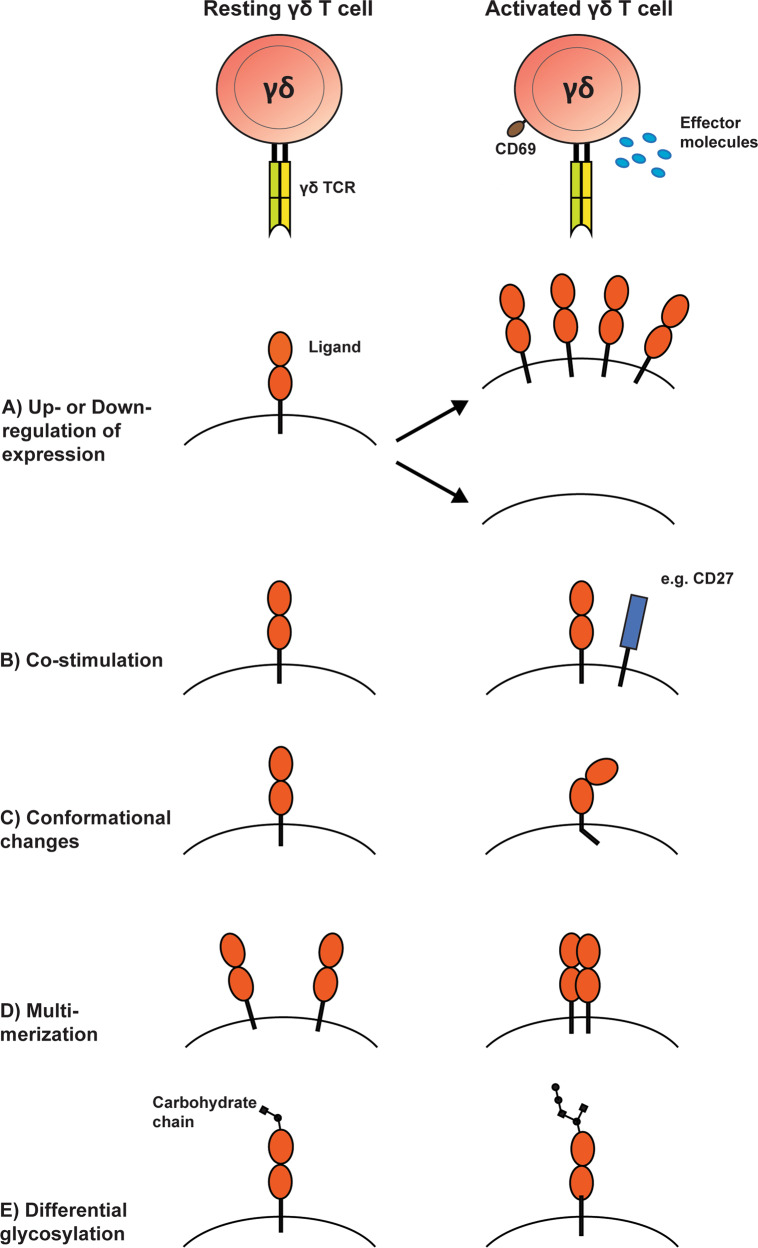Fig. 1.
Mechanisms for the discrimination of health and stress conditions via the γδ TCR. a The putative γδ TCR ligand might be differentially expressed depending on the stress level of the cell. In the case of stress-induced antigens such as Annexin A2 or MICA/MICB this would mean an upregulation whereas BTNL molecules might be downregulated allowing for γδ TCR activation via the CDR3. b Co-stimulatory molecules such as CD27 or JAML might be required for full activation of the γδ TCR and their upregulation might be triggered by stress conditions. c Changes in the conformation of the ligand might increase the accessibility of a particular γδ TCR binding domain. BTN3A1 for example undergoes conformational changes upon p-Ag binding. d Multimerization or monomerization of the respective ligand can be triggers for γδ TCR as in the case of the HLA-molecule A*24:02. e Glycosylation patterns are modified upon infections or tumor development. These changes in post-translational modifications might lead to different outcomes of γδ TCR interaction with the same ligand with different glycan residues on the extracellular domain

